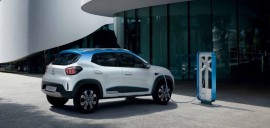The new BMW i8 plug-in hybrid sports car was introduced in 2011. Designboom is taking us behind the scenes of the production process of this supercar.
There are two elements composing the architecture of the BMW i8, namely the life module passenger cell made of carbon fiber reinforced plastic (CFRP) which is produced in Moses Lake, Washington State (USA) and the aluminum drive model.
Due to parallel assembly process, and the fact that the CFRP structure is made of fewer parts, the total processing time in the body shop and on the assembly line is about half the time of what would be required for conventional production. Moreover, the horizontally split lifedrive architecture consists of two separate, independent modules, which represents a first in the history of BMW. The high-voltage battery is also considered as an important component of the BMW i vehicles. The battery is design in such a way that individual components can be easily swapped for repair purposes.
Regarding the internal components, it comprises interior housing, a rotor and a stator. For the exterior, the bi-color look can be achieved thanks to a multi-tone paint coat applied on the bumpers. At the same time, the fenders, front, rear and side parts are painted individually in order to optimized significantly the car’s weight. Finally, a waterjet system is used to cut precisely the contours and insert the remaining openings.
To read the full process, visit DesignBoom










